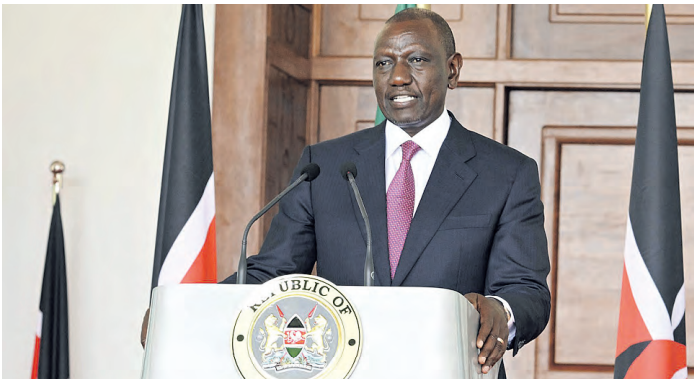

If one were to make a judgement based on what is on social media, one conclusion seems unavoidable.
And that is the fate of incumbent President William Ruto is sealed and there is not the remotest chance of his reelection for a second term.
This is the message hammered home every day by what seems to be a very large and well-organised team of ‘keyboard warriors’.
However, we should pause and consider this fact: is this not the exact position US President Donald Trump was in two years to the election that he won?
With this in mind, let us consider key parallels between the reelection challenges that the Presidents may seem to have.
A key aspect considered to be a hurdle for Trump was the shift in voter demographics, perceived to be to his detriment.
At the end of the day, however, by having an opponent who seemed to lack experience and leadership and was criticised for her handling the border issue that affects a huge Democratic voting segment, many voters changed their preferred candidate.
In Kenya, the youth are touted collectively as a voting bloc that does not favour the current government.
For the youth to have serious impact, however, they must engage in politics in a structured manner. In lieu of genuine participation, whatever their gains in highlighting the administration’s deficiencies shall be taken over by politicians claiming leadership.
That politicians prey on youth and exploit them is not lost on this demographic.
Nationwide grassroots forums allowing open querying of government policies and projects - countered by corresponding factual explanation from panels - is a good fi rst step in establishing government credibility.
The “Comrades Chapter” of the UDA Party is an attempt at involving youth and explaining of policies. Another component of Trump’s eventual success was to capitalise on already-achieved US economic gains, which many felt left them behind.
In Kenya, the fall in disposable income, which is said to be an insurmountable hurdle, is a factor in policies that have prioritised structured changes.
Such structured changes traditionally take 36 to 48 months for the full benefi ts to be felt. This longer timeline contrasts with populist measures that are immediate, but usually unsustainable for longer than eight months.
M-Pesa, which is reported to transact Sh95 billion daily and has more than 300,000 agents nationwide, had only 1,000 agents at its launch in 2007.
That number jumped to 40,000 agents in fewer than fi ve years. is is the potential of structured programmes such as the Social Health Authority and County Aggregation and Industrial Parks aimed at reducing the cost of healthcare and increasing net employment, respectively. Both result in increased disposable income.
These may currently be facing adaptation challenges, but that does not mean they cannot eff ectively expand and eventually cover the whole country.
Another apparent critical problem for candidate Trump was the mainstream media; its outlets were believed to undermine his candidacy.
His solution was to bypass traditional outlets and reach out directly to the voter through alternative means, including social media.
This allowed him to change the prevailing negative narratives about him.
The Kenyan government is the subject of robust interrogation of its policies, as it should be, but unfortunately, is often subjected to targeted debilitating ridicule with thinly camouflaged political objectives.
It is not always easy to draw a line between light mockery and plain insults. Research indicates that a media blitz of between six to 12 weeks can change entire voter perception.
The Obama campaign in 2008, the Brexit campaign in 2016 and the Biden campaign of 2020, are all examples of victory despite doomsayer pundits and an initially skeptical public.
In all these cases, success hinged on targeting key voter demographics, with an effective and believable narrative to counter pre-existing beliefs or suspicions.
The confidence of those believing Ruto’s reelection loss is a forgone conclusion may be shattered should reflect on the words of Mahatma Gandhi: “First they ignore you, then they laugh at you, then they fight you, then you win.”
FATMA BARAYAN, The writer is a
lawyer.


